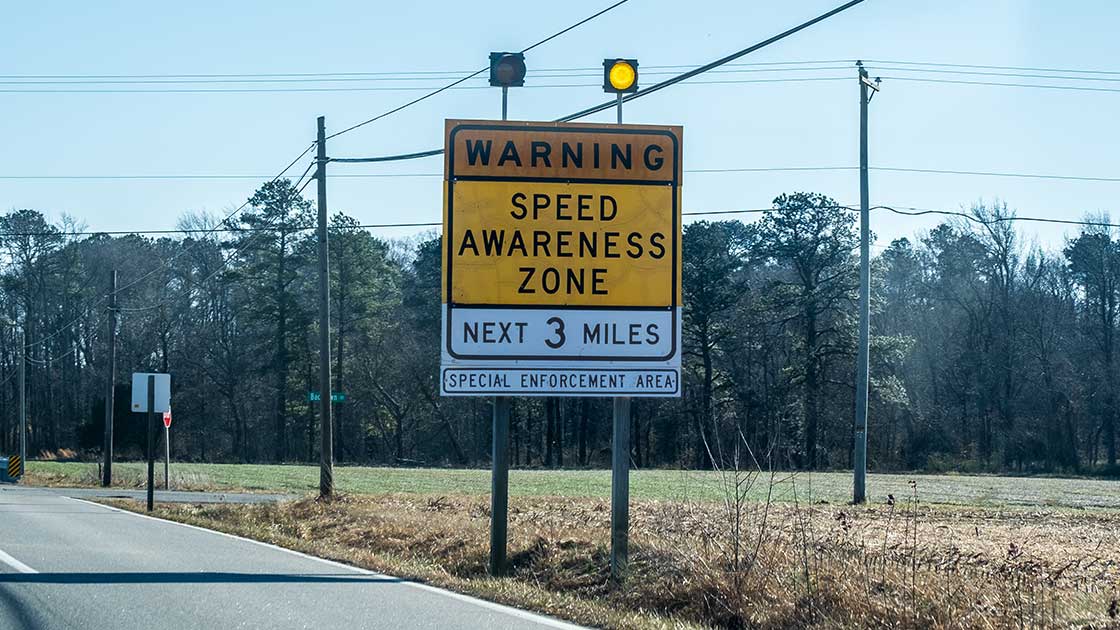Insight
To create a safe transportation system, start by taking a comprehensive approach to speed
December 7, 2022

The most recent annual tally of carnage on our roads is sobering: an estimated 43,000 people killed in 2021. That’s more than the year before, which was more than the year before that.
Fatal crashes jumped during the pandemic, but we have been trending in the wrong direction for several years, even as other countries make progress toward eliminating road deaths. Since 2014, when the U.S. had fewer than 33,000 fatalities, we’ve seen a 31 percent increase in lives lost on our roadways.
Reversing this trend will take more than a single solution; it will require a paradigm shift. The Safe System approach — a framework that has been adopted by countries such as Australia, the Netherlands and Sweden and was recently included in the U.S. Department of Transportation’s National Roadway Safety Strategy — can jump-start progress. We should begin by applying it to one of our deadliest problems: speed.
The Safe System idea is simple: At its most basic, it acknowledges that humans make mistakes and, when they do, the results should not be fatal. In this framework, redundancy is key; if one part of the system fails, others can still prevent crashes or mitigate the consequences.
We can apply this framework to all aspects of road safety, but speed is a logical issue to target first, both because it is a huge part of what makes U.S. roads so dangerous and because we have a basket of proven solutions to address it.
Speed is unforgiving of human error, making collisions both more likely to occur and more deadly. But that hasn’t stopped states from steadily raising speed limits on interstates and other freeways. Today seven states have maximum speed limits of 80 mph; on one stretch of road in Texas you can legally drive 85.
Of course, drivers often aren’t content to stay within limits. More than a quarter of U.S. road fatalities are speeding-related, meaning a driver was exceeding the posted speed limit, driving too fast for conditions or racing. This isn’t just an issue on freeways; speeding is a growing problem on urban streets and is one reason pedestrian fatalities have risen almost 80 percent since 2009.
A Safe System approach to speed would involve setting appropriate limits, enforcing those limits consistently, implementing new vehicle technology and modifying our road infrastructure.
Let’s take each of these components one by one. First, adjusting speed limits to prioritize safety. By moving away from the conventional practice of pegging the limit to prevailing vehicle speeds, we can focus on preventing injury to all road users, including pedestrians and cyclists. Earlier this year, the District of Columbia became one of the latest major cities to lower permitted speeds, dropping the limit to 25 mph on some major corridors.
Second, enforcement to give teeth to those limits. Speed cameras are a proven strategy for this and can minimize encounters between police and violators. Fatalities have dropped by as much as 50 percent over the last decade in countries where they are widely used, yet few communities in the U.S. use them.
Third, vehicle technology. Many commercial fleets in the U.S. have speed limiters. But technology that prevents or discourages speeding has yet to be widely adopted in private passenger vehicles. Intelligent Speed Assistance, for example, which as of July is required on new vehicles in Europe, can keep track of speed limits and issue warnings to the driver or prevent the vehicle from exceeding the speed limit.
Finally, traffic-calming solutions such as narrowing lanes, reducing their number or installing speed humps can coax drivers into easing off the gas pedal.
Each of these strategies can help, but combining them is even more powerful. Last year, officials on Maryland’s Eastern Shore used a combination of enforcement, engineering and public education to cut speeding on a busy two-lane road to the beach. With the help of a grant provided by IIHS, the Governors Highway Safety Association and the National Road Safety Foundation, lanes were narrowed by painting the edge and center lines thicker. Police stepped up enforcement, while signs, billboards and social media advertising encouraged drivers to slow down.
The result was a 9 percent drop in average speeds. The odds that a vehicle was exceeding the speed limit plummeted by more than three-quarters.
Concerted, multipronged efforts like this one are needed to make the Safe System commitment more than just words on paper, which is what we now have with the National Roadway Safety Strategy. Writing those words, however admirable and necessary, was the easy part. Turning them into actions will be harder.
Creating a Safe System requires input from everyone — engineers, law enforcement, policymakers, legislators, community advocates, public health practitioners, road safety professionals and the general public — as well as coordination among those groups. It will require persistence and dedication from all parties over the long term. Tackling our speed addiction — with comprehensive plans designed and implemented at the local, state and federal levels — is the perfect place to start.
